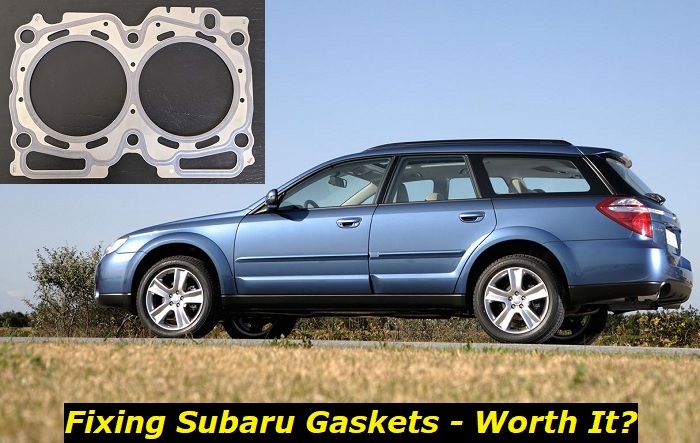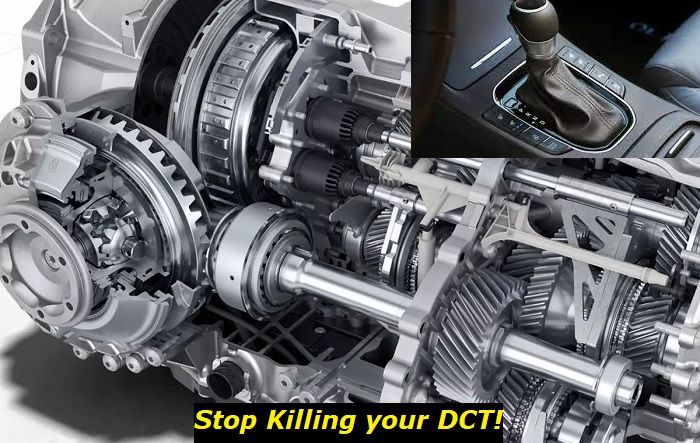Gasket leaks can happen in most aging engines, especially those that are lacking regular maintenance. However, the 2.5L EJ-series engines of Subaru in particular have been notorious for head gasket leaks due to their use of OE gaskets. And since this problem involves the engine, this can lead to a very costly repair if not taken seriously.
Engine leaks highlights
- Level of importance:Medium
- Commonreasons:Problems with seals and gaskets, internal failures
- DIY inspection:Possible but complicated
- DIY repair:Mostly,impossible
- Price for repair:$150 - $650
- Can you drive?Only if the leak is minor
- Ways to fix:Replace the broken gasket or seal, replace the failed part

What Gaskets Do
Gaskets are sealing devices that are used to prevent the leakage of fluids or gases. In Subaru engines, they are used to seal the various components and subsystems within the engine. This includes the cylinder head, intake and exhaust manifolds, oil pan, and timing cover.
Gaskets are important in preventing leaks that can lead to engine damage or failure. They also ensure optimal engine performance by keeping fluids and gases from escaping into other areas where they can cause harm.
There are many different types of gaskets available for Subaru engines, and each one is designed for a specific purpose. When selecting a gasket for your engine, it is important to choose one that's made from high-quality materials and compatible with the other engine components. Failure to do so can result in engine damage or failure.
Replacement Cost
For a Subaru 2.5-liter engine, the base head gasket replacement typically costs between $1,500 and $1,800, which already includes the replacement parts and labor. The prices can go up between $2,200 and $2,700 to replace other parts that may have been damaged due to your faulty gasket like the timing belt and components, water pump, spark plugs, and oil seals, among others.
Further damage that will require an engine rebuild can easily jack up the costs between $2,500 to $4,000 while an engine replacement typically goes between $3,000 to $5,000, which makes the latter a more economical alternative in some instances.
How Long Will They Last
Normally, head gaskets should last over the entire life of the engine or about 200,000 miles. The ones found in the 2.5L boxer engine of Subaru vehicles have an estimated life of 100,000 to 150,000 miles with proper maintenance.
The assessment does not include other factors that contribute to the quick wear of this part though, so the numbers can be reduced with them at play. With that, there have been reports and complaints from owners that the replacement for this component may happen as early as 40,000 miles or even less.
Causes of the Quick Wear of Subaru Gaskets
Besides regular wear and tear, there are plenty of factors that can damage the gaskets in your Subaru, the common ones include:
1. Extreme Operating Temperatures
The OE gasket is poor at handling extreme operating temperatures and this can be made worse if your engine overheats. These events can cause it to warp, deform, and crack, which will prevent it from sealing correctly.
2. Incorrect Torque Settings
If the bolts that hold the cylinder head in place are not torqued correctly, the gaps they create can cause the gasket to leak. This can gradually worsen by the resulting vibrations initiated by the gaps.
3. Sudden Changes in Temperature
When the temperature changes too rapidly from hot to cold and vice versa, it can warp, deform, or make the gasket brittle. Temperature fluctuations can bring about localized thermal expansion that leads to tension and compression that makes the gasket brittle and prone to cracking as time goes.
4. Engine Configuration
The flat orientation of Subaru's boxer engine also contributes to the quick wear of the gasket. When the flat engine is turned off, its oil tends to stay in touch with the head gasket rather than have it flowing back into the oil pan. This can degrade the quality of the OE gasket over time.
5. Electrolysis
Coolant leaks in some Subaru models can trigger electrolysis that turns the fluid into a corrosive substance. If it gets in the location of the gasket, it may degrade the component quickly.
6. Pre-Ignition and Detonation
Pre-ignition and detonation can produce high temperatures that can heat up and put more pressure on the cylinders. The resulting tension can then put stress on the gasket as well as other engine components like the pistons and valves.
Symptoms of a Bad Gasket
The effects of a worn gasket in a Subaru vehicle can vary depending on the nature of the damage. The most common symptoms though are in the form of the following:
1. Overheating
The gasket's failure to seal correctly can then lead to dirt or other fluids getting into your engine components where they are not supposed to be. So, when dirt mixes with your vehicle's fluids, it will result in a thick carbon deposit that can create blockage or lubrication issues.
Likewise, the mixture of fuel, oil, and coolant can form a sludge that can have the same results. All these can be a cause of the further rise in temperature that can contribute to an overheating cycle that gradually worsens over time.
2. Leaks
One more symptom that can be a telltale sign of a bad gasket is leaks. Once the gasket starts to fail, it will not be able to do its job of sealing the engine components correctly. This will then cause fluids like oil and coolant to start leaking.
You may notice this when you see puddles of fluid beneath your car, fluid streaks or residues in some parts of your auto, or when you see smoke coming out from under the hood.
3. White Exhaust Smoke
If you notice that your car is releasing white exhaust smoke, this could be an indication that your gasket has failed. The white smoke is most likely caused by coolant leaking into the combustion chamber. When this happens, it will burn along with the fuel, which will then produce white smoke.
4. Decreased Fuel Efficiency
Fuel efficiency can be negatively impacted by a bad gasket. This is because the leaking of fluids or lubrication problems can cause your engine to work harder, which will subsequently force it to use up more fuel. Similarly, coolant contamination in the fuel can also add up to the loss in fuel efficiency.
5. Rough Idling
If you notice that your car is idling roughly, this could be pointing to a bad gasket. The rough idling is most likely caused by the leaking of fluids or the burning of coolant, both of which can affect the way your engine runs.
6. White Milky Substance Under the Oil Cap
If you take a look under your car's oil cap and you see a white, milky substance, this is an indication that your gasket has failed. This is because either coolant or fuel is leaking into the engine oil, which will then cause the oil to become fouled. The white, milky substance is a chemical reaction caused by the contamination.
7. Engine Knocking
Another symptom of a bad gasket is engine knocking. This is most likely due to the fluid leaks or the burning of coolant, both of which can affect the way your engine runs as it develops lubrication issues. The engine knocking can be a sign that your engine is not running as smoothly as it should.
8. Check Engine Light
One straightforward sign of a bad gasket is the check engine light being illuminated on your dashboard. This is because the various sensors in your car's engine can pick up on the leaking of fluids or the burning of coolant, both of which can trigger the check engine light.
9. Car Stalls While Driving
If you notice that your car stalls while you are driving, this could be an indication of a bad gasket. The stalling can be caused by leaks or fluid contamination.
If you notice any of these symptoms, it is best to have your car checked by a professional as soon as possible to avoid further damage. A bad gasket can cause extensive damage to your engine if not addressed promptly.
Repairing the Gasket in Subaru Vehicles
A leaking gasket due to damage should be replaced right away. This can be a tedious process in a DIY setting, so bringing your auto to a mechanic for a fix is the most advisable solution to this problem.
When replacing the gasket, the first thing that has to be done is to detach the exhaust manifold, intake, and head to get access to the part. Then, remove the old gasket by gently prying it off with a flathead screwdriver. Extra care must be undertaken to prevent damaging the surrounding areas.
Next, the surface area where the new gasket will be placed should be cleaned. A good way to do this is to use a wire brush or a cleaning solution. This will ensure that the new gasket installs properly.
Once the surface is clean, a thin layer of sealant should be applied to keep the new gasket in place. The gasket replacement must be positioned correctly and then gently pressed in place.
After all that, any parts, bolts, or screws that were removed during the process must be returned to their proper places and tightened according to their specifications to prevent gaps that can result in leaks or overtightening that can damage the new gasket.
Conclusion
Driving or operating your Subaru in any way while it has a damaged gasket should be avoided. This can cause further damage to your engine, fire, or even accidents. Therefore, have it replaced immediately as soon as you start experiencing the symptoms stated here.
About the authors
The CarAraC research team is composed of seasoned auto mechanics and automotive industry professionals, including individuals with advanced degrees and certifications in their field. Our team members boast prestigious credentials, reflecting their extensive knowledge and skills. These qualifications include: IMI: Institute of the Motor Industry, ASE-Certified Master Automobile Technicians; Coventry University, Graduate of MA in Automotive Journalism; Politecnico di Torino, Italy, MS Automotive Engineering; Ss. Cyril and Methodius University in Skopje, Mechanical University in Skopje; TOC Automotive College; DHA Suffa University, Department of Mechanical Engineering






Add comment